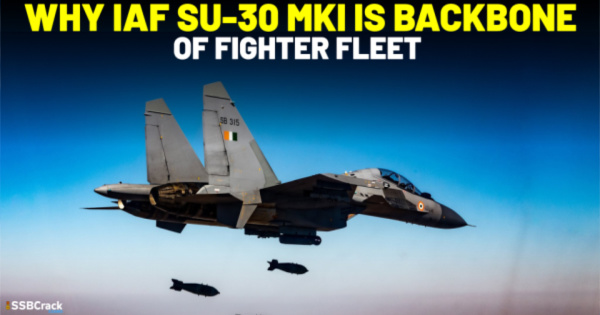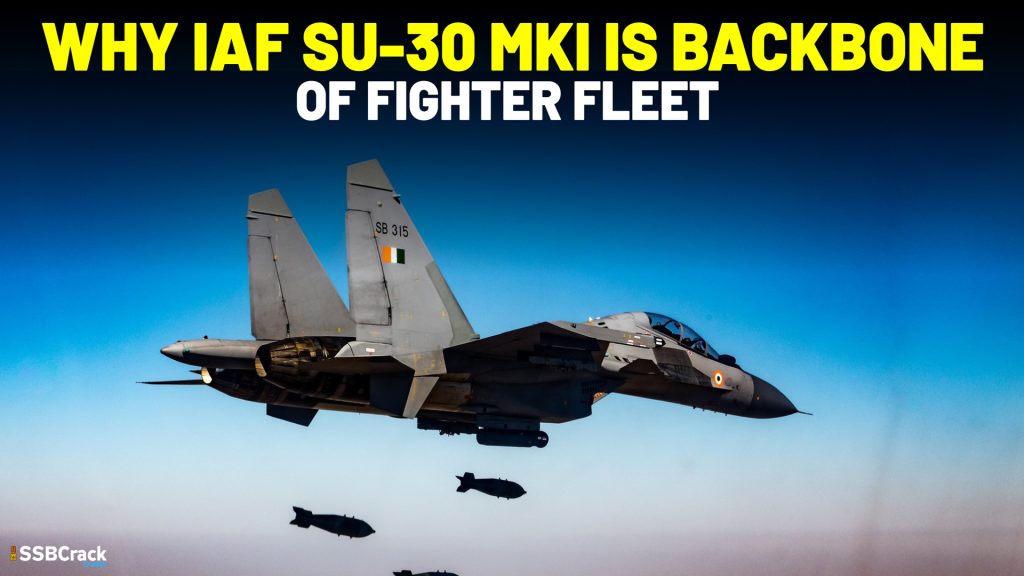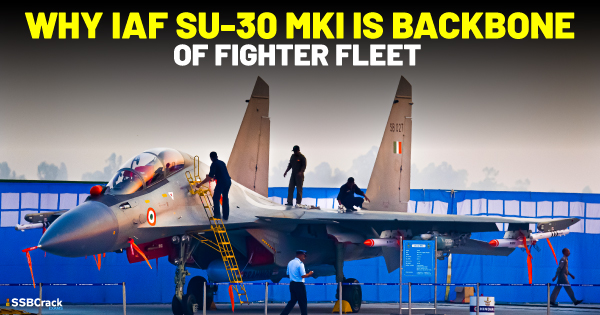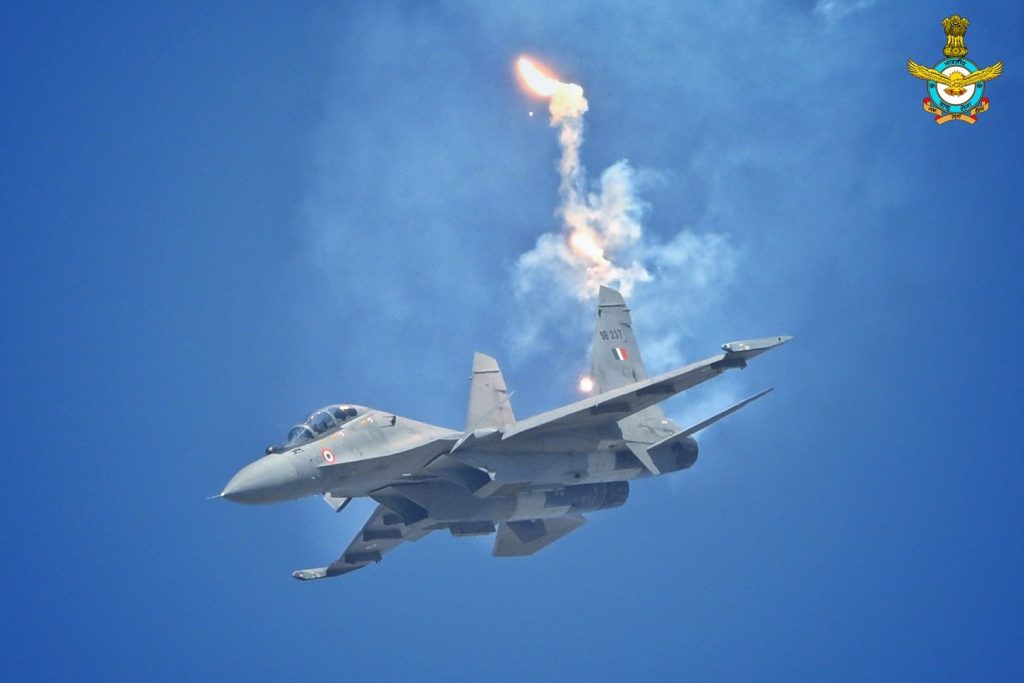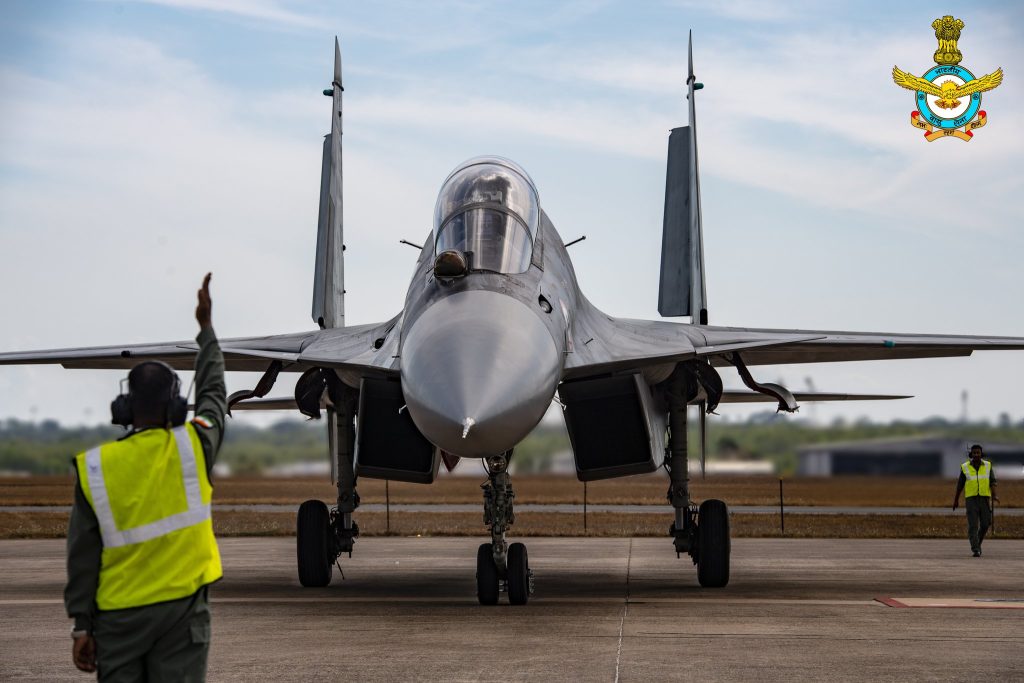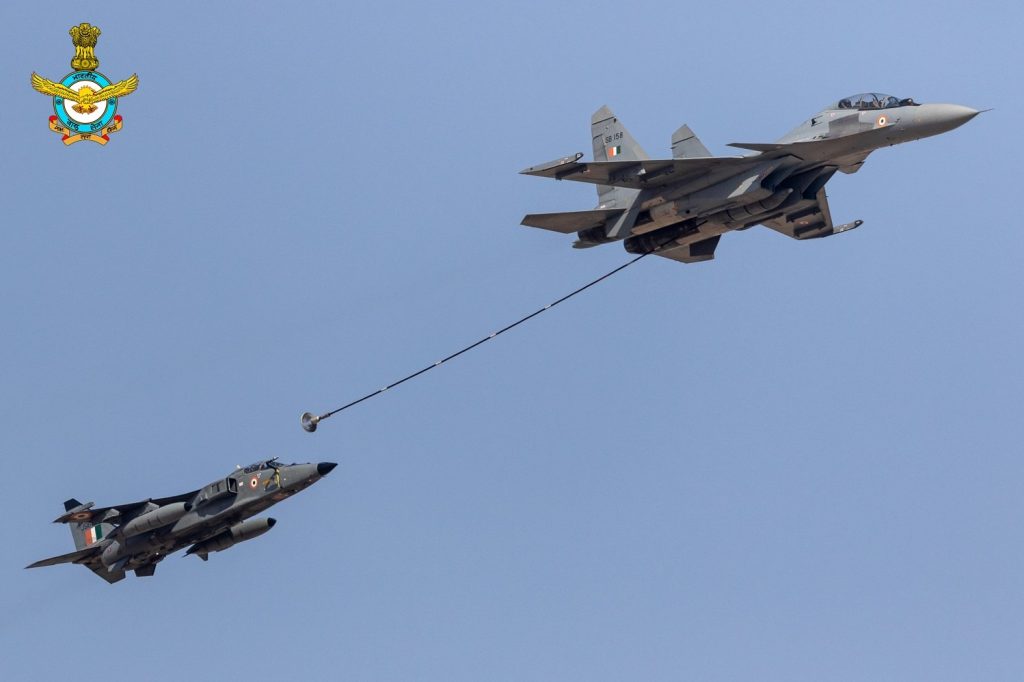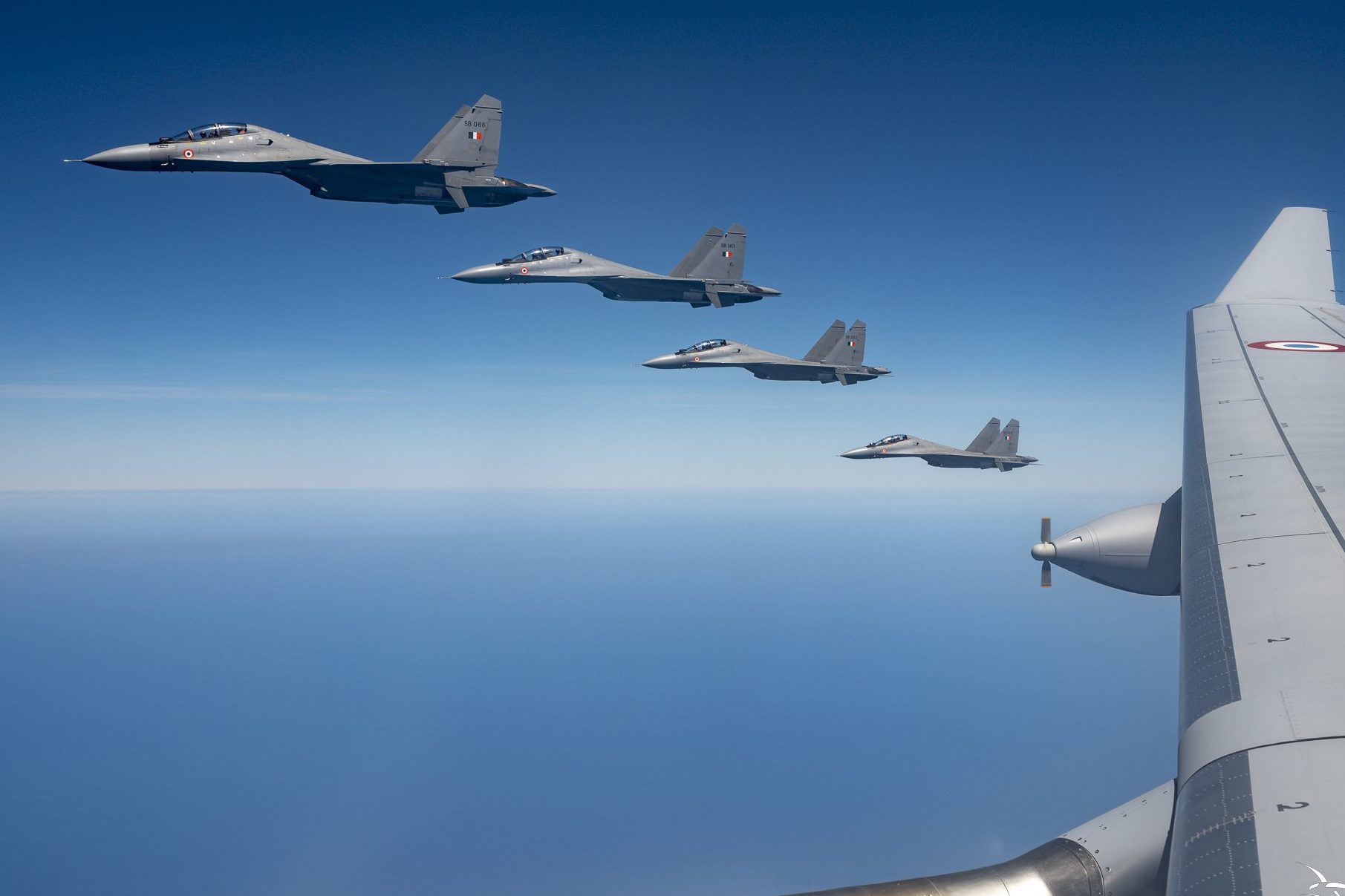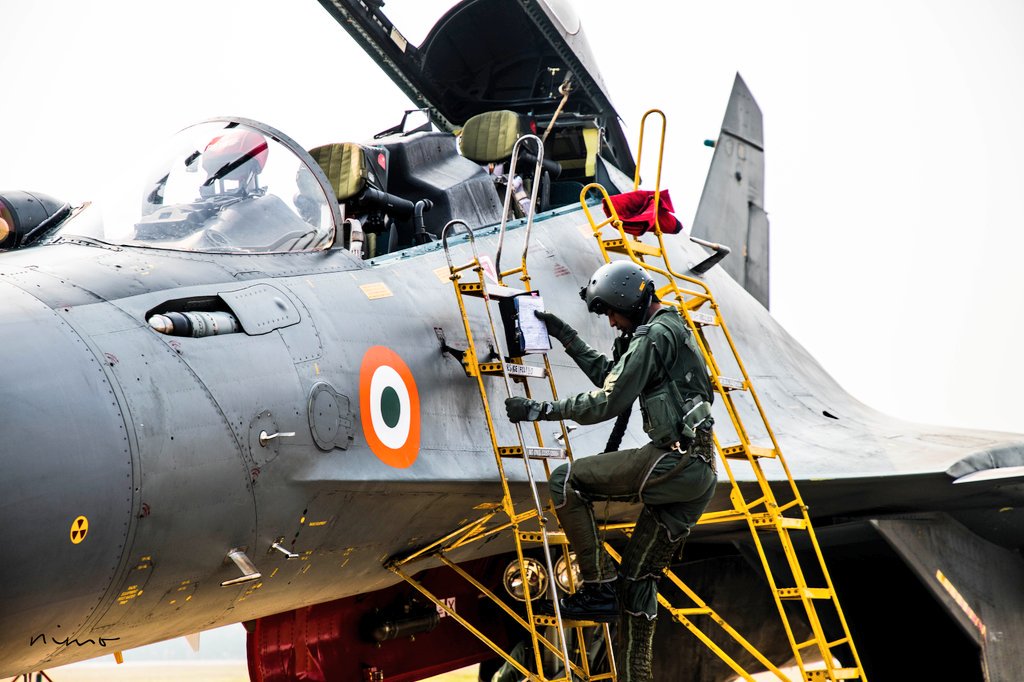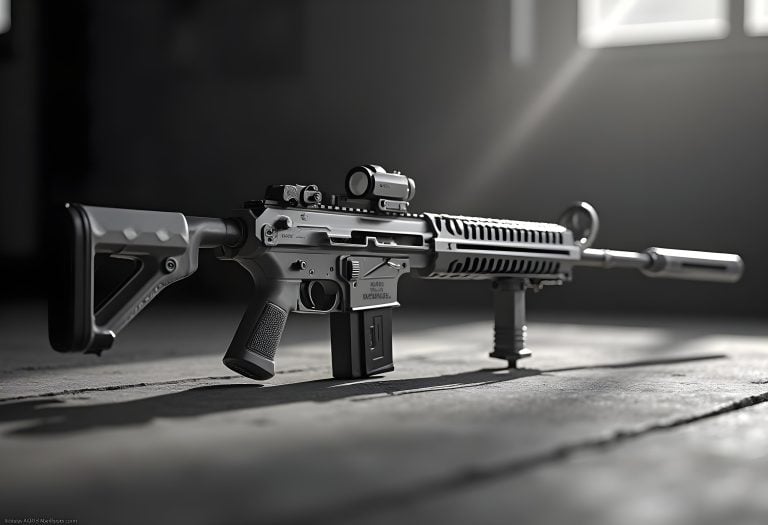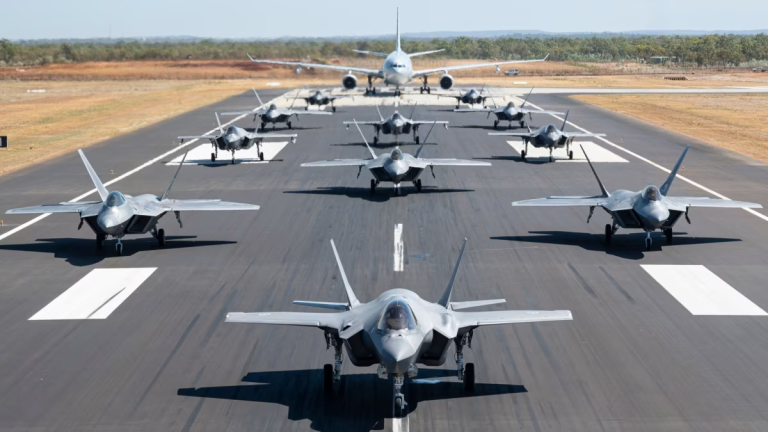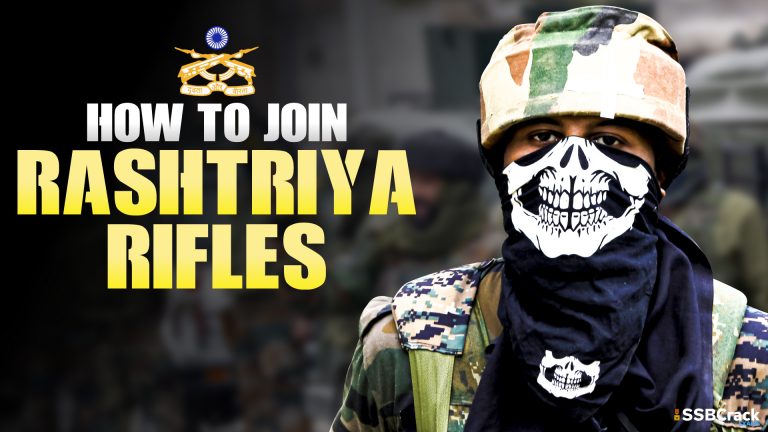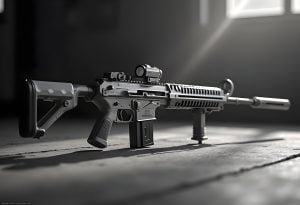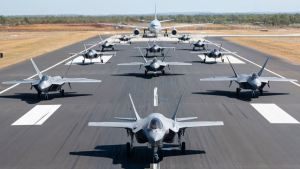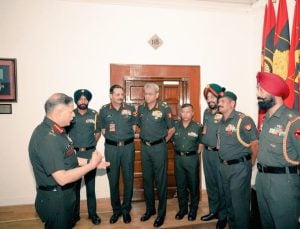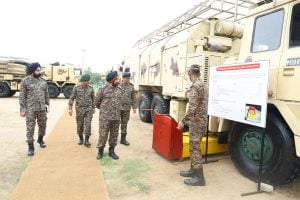The Sukhoi Su-30 MKI is a twin-jet multirole air superiority fighter designed by Russian company Sukhoi and manufactured for the Indian Air Force by Hindustan Aeronautics Limited (HAL) in India under license (IAF). This fighter is a heavy, all-weather derivative of the Sukhoi Su-30.
The variant’s development got underway after India and Russia agreed to produce 140 Su-30 fighter planes in 2000. The Indian Air Force received the first Su-30MKI variant built in Russia in 2002, and the first Su-30MKI made in India was approved and put into service with the IAF in 2004. As of January 2020, the IAF had roughly 260 Su-30MKIs in its possession. Up until 2020 and beyond, the Su-30MKI is anticipated to serve as the foundation of the Indian Air Force’s fighter force.
The aircraft is specifically designed for Indian requirements and incorporates Israeli and French sub-systems together with Indian equipment and avionics. Its capabilities are comparable to those of the Sukhoi Su-35, with which it shares many design cues and parts.
Why IAF Su-30 MKI is the backbone of the Fighter Fleet
Su-30 MKI: Background
The IAF fighter force is expected to shrink to a low of 32 squadrons, or roughly 576 aircraft, as several squadrons of obsolete MiG-21 interceptors and MiG-27 ground assault fighters are quickly retired. That is much less than the 42 squadrons that were suggested in the 1950s. Another factor is the IAF’s lack of faith in the locally produced Tejas, which was exacerbated by the cancellation of the 126-aircraft contract with France and the hold-up in signing the amended 36-aircraft agreement.
The confidence in Russian aircraft is well-founded. The IAF’s war-fighting doctrine has altered, putting more of an emphasis on long-range and strategic operations, in addition to making a significant technological transfer from a fleet dominated by MiG-21 fighters.
Why IAF Su-30 MKI is the backbone of the Fighter Fleet?
The Sukhoi is referred to by the IAF as its “air domination fighter” because it enables the force to carry out the variety of tasks necessary to keep up with India’s expanding international prominence. The Sukhoi’s adaptability has offered the IAF a great deal of leeway in deploying the aircraft in offensive missions thanks to its expanded range, speed, weaponry, and super-maneuverability.
Also Read: Difference Between IAF Rafale VS IAF Sukhoi 30
The defence brass requested 64 fighter squadrons for the IAF in the 1950s. The number was reduced in the 1960s to 42. But contemporary jets, like the Sukhoi, are adaptable fighters that can do combat air patrols as well as attack and bombing missions, establishing a safe zone for other jets to fly in. It means that fewer aeroplanes are required today to complete a task than were required with earlier generations of aircraft. Increased availability of aircraft for missions is also facilitated by improved survivability and reduced maintenance.
For such a high-end, pricey weapon platform, 300 is an astounding figure. This demonstrates the IAF’s astute judgment in realizing that while fleet utilization cannot be at 100 per cent, having a significant number of air-superiority aircraft on hand is essential to completing the task at hand. Now that it has such numbers at its disposal, the IAF can create a network of bases across the nation.
Also read: Difference Between Su-30 And Su-30MKI Of Indian Air Force?
The majority of Indian air bases, including Adampur, Jammu, Amritsar, and Jodhpur, used to be near the Pakistani border due to the short range of IAF fighter aircraft. However, Sukhois are currently also stationed in locations like Thanjavur in the deep south, Chabua in the northeast, and Pune in western India. The Sukhois can move between the fronts in Pakistan and China when necessary thanks to their long legs and quickness.
Also read: All Aircrafts Of Indian Air Force [UPDATED LIST]
Hindustan Aeronautics Limited, a state-owned company in India, has finished producing all 272 Su-30MKIs under numerous contracts from the Indian Air Force to build the aircraft under license, and it now anticipates receiving additional orders for the jets from the Air Force. The Su-30MKI, India’s only heavyweight fighter jet class, made its first flight in 2000 and went into service in 2002. It is also by far the most capable aircraft in the country’s fleet. The aircraft has undergone incremental modernization over the course of its lengthy manufacturing life, and it now serves in a variety of capacities, including the precision bomber, strike fighter, maritime strike fighter, “AWACS killer,” and air superiority fighter.
Specifications of Sukhoi Su-30 MKI
- The BrahMos cruise missile, R-77 and Astra active radar guided air to air missiles, SPICE guided bomb, and K-100 missile designed to strike enemy support aircraft at extreme ranges are only a few of the armaments that the fighter is compatible with. The aircraft’s speed, altitude, manoeuvrability, and endurance greatly surpass those of other Indian jets like the Rafale and Mirage 2000, making it unmatched in terms of flight performance.
- The Su-30 is an exceptionally lethal fighter at all ranges since it was the first in the world to use supermanoeuvrability and cutting-edge thrust vectoring engines, which when combined with its potent sensors, impressive flying performance, and fearsome electronics make it possible. Integration of the AL-41 engines and Irbis-E radar from the more sophisticated Su-35 air superiority fighter has been suggested as a more radical upgrade to the design, which would ensure a continued capability advantage over new fighter classes slated for deployment in neighbouring Pakistan and China.
- These technologies would give the Su-30 a significant increase in terms of flying performance, manoeuvrability, electronic warfare capabilities, and situational awareness, with the Irbis-E being specifically designed to counter stealth aircraft. Additionally, this would enable the fighter to use a variety of cutting-edge weapons, such as the 400km-range R-37M hypersonic air-to-air missile. A new type of 500km-range hypersonic air-to-air missile is also being developed for the Su-30MKI as part of a collaborative Russian-Indian initiative. The Indian fighters wouldn’t be able to utilise the range of this missile without the Irbis-E radar.
The Su-30MKI is expected to be a staple of the Indian fighter fleet for many years, although the Su-57 next-generation aircraft, which is anticipated to be purchased by the mid-to late-2020s, may overtake it as the Air Force’s most proficient combat jet. India has repeatedly expressed strong interest in purchasing the Su-57, either “off the shelf” from Russia or for licence manufacturing in India itself. The Su-57 is another heavyweight design intended to surpass the capabilities of Russian Su-27 and Su-30 jets.
To crack the SSB Interview and join the Indian Armed Forces as an Officer, You can join our SSB interview live classes batch and we recommend you to Enroll SSB INTERVIEW ONLINE COURSE. Trusted by thousands of defence aspirants.
Also Read:
- All You Need To Know About Indian Air Force Fighter Aircraft
- Top 5 Fighter Jets Of Indian Air Force
- List Of Aircraft Used By the Indian Navy
- All Fighter Jet Acquisitions By The IAF
- List Of Transport Aircraft Carriers Used By Indian Armed Forces
- Why India Chose Dassault Rafale Over Eurofighter Typhoon
- Top 5 Most Dangerous Attack Helicopters In The World
- Comparing Rafale And F-35: Who Will Win?


